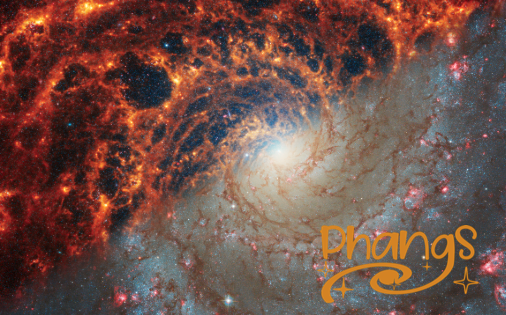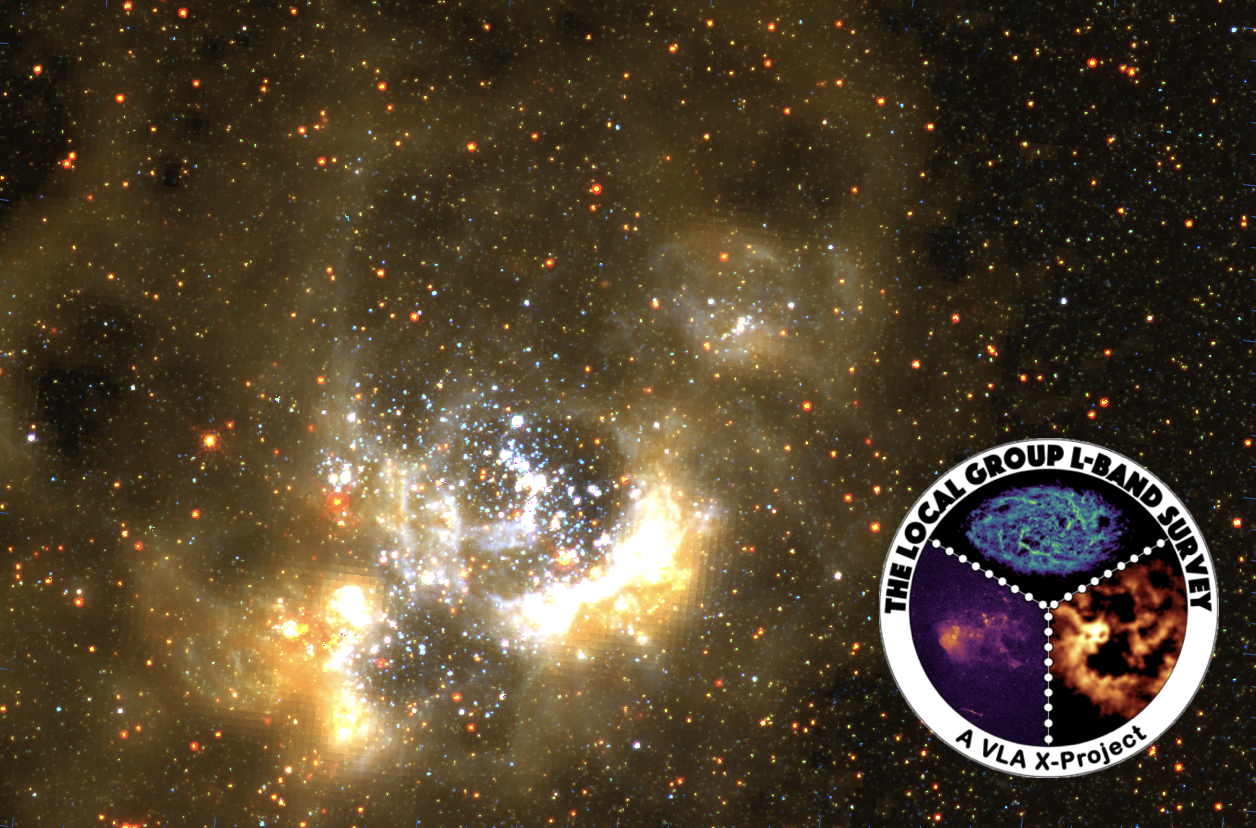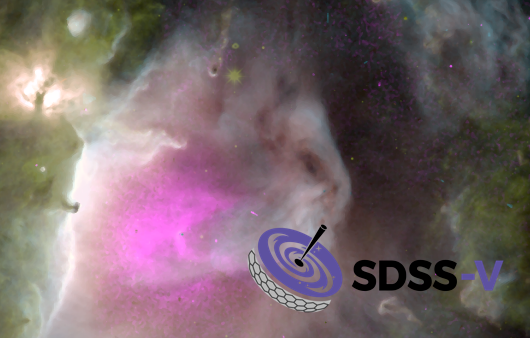Supernova Remnants
I study the physics of astrophysical shocks using supernova remnant populations in our Milky Way and neighboring galaxies.
I study the physics of astrophysical shocks using supernova remnant populations in our Milky Way and neighboring galaxies.
I look at nearby galaxies to understand where and how much energy stars deposit in the interstellar gas, and how this affects future star-formation.
I am heavily involved in using radio observations to independently study the progenitors of supernovae .
I use stellar population surveys as `clocks' to measure the timescales on which poorly understood varieties of stars evolve.

PHANGS is a multi-wavelength survey of stars and the ISM of 90 nearby star-forming galaxies at `cloud-scale' (20-100 pc) resolution. The galaxies have been observed with major observatories, including ALMA, Hubble, JWST, VLT/MUSE, VLA, AstroSAT, and Chandra. I am an active member of the survey, leading work on massive stars and supernova feedback.

LGLBS is an 1800+ hrs VLA survey of the northern Local Group galaxies -- M31, M33, NGC6822, IC10, IC1613 and WLM -- at 1-2 GHz. The goal is to obtain the highest sensitivity and spatial-resolution maps of the atomic gas, radio-continuum, radio recombination lines and polarization in these galaxies. I am the technical and science lead for the radio-continuum portion of LGLBS.

The SDSS-V LVM is the most comprehensive optical integral field unit (IFU) spectroscopic survey of the Milky Way, Magellanic Clouds and the Local Volume. I am part of the supernova remnants and stellar feedback working groups in SDSS-V LVM.